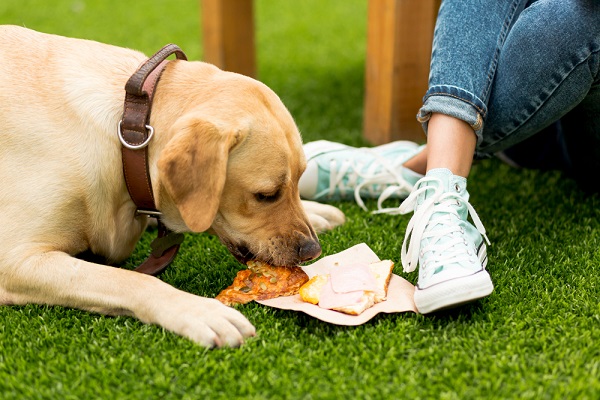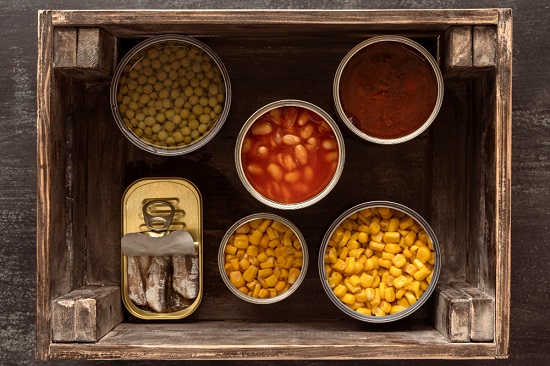If you’re someone who loves to cook spicy foods for your dog, you might be wondering if they can actually eat them. After all, even though dogs have a wide range of taste receptors in their mouths, some spices might still be too hot for them.
In this article, we’ll explore the topic of whether dogs can actually eat spicy food, and give you tips on how to prepare it safely for your pet. We’ll also include a list of some of the best spicy foods for dogs, so that you can find what will appeal to them the most.
As responsible pet owners, it’s natural to wonder about the dietary needs and preferences of our canine companions. One question that often arises is whether dogs can eat spicy food. While humans enjoy the flavorful kick of spices, it’s essential to understand that dogs have different digestive systems and sensitivities. In this comprehensive guide, we will explore the top 10 reasons why you should avoid feeding spicy food to your beloved furry friend.
What Is Spicy Food?
If you’re used to cooking with bland foods, then the addition of spices may be a big shock to your system. Spices come from a wide variety of plants and are used in various dishes around the world. In many cases, spices are used to add flavor, aroma and nutrients to food.
While spices can be enjoyed by humans and dogs alike, some individuals may find spicy foods too hot for their taste. This is especially true for young children who may not be able to tolerate high levels of heat. If you’re unsure about whether or not your dog can handle spicy food, start by mixing a small amount of the spice in with their regular food. Over time, you can gradually increase the spice level until they are comfortable eating it.
Some people also recommend restricting spicy food intake to certain days of the week or during periods of rest. This will help ensure that your dog doesn’t develop an intense craving for the spice and wind up eating too much.
Types of Spicy Foods
There are a variety of spices that can be found in spicy foods, and as a result, there is no one-size-fits-all answer to whether dogs can eat spicy food. However, most experts believe that dogs can safely eat some form of spicy food, as long as the spice level is low and the food is not excessively hot. Some common spices used in spicy foods include chili powder, cumin, garlic, and paprika.
Some dogs may find certain spices too hot to eat, so it is important to test a small amount of the food on a small dog before giving it to your larger dog. Also, always keep in mind that some spices can cause urinary tract problems in dogs if consumed in large quantities. So if your dog starts having trouble urinating after eating spicy food, discontinue feeding him or her the food and consult with a veterinarian.
Can Dogs Eat Spicy Foods?
Dogs have a wide range of taste buds, so the answer to this question varies depending on the specific type of spicy food your dog prefers. But in general, most dogs can safely eat some mild to medium-spicy foods. However, some spicy foods may be too hot for some dogs, and can cause them to become sick or even die. If you’re unsure whether your dog can safely eat a particular spicy food, consult with a vet before feeding it to them.
The Risks of Feeding Your Dog Spicy Food
There are a few risks associated with feeding your dog spicy food. The most significant is that spicy food can increase the risk of bloat in dogs. It’s also possible for your dog to develop a fever from eating spicy food, and they may experience gastrointestinal problems if they consume too much. If you’re unsure whether or not your dog will be able to handle spicy food, it’s always best to feed them a small amount and monitor their behavior.
Tips for Feeding Your Dog Spicy Food Safely
It’s no secret that dogs love spicy food. In fact, many dog owners believe that their pets would not be the same without a dish of hot sauce or chili on the table. However, feeding your dog spicy food can be dangerous if done incorrectly. Here are some tips for feeding your dog spicy food safely:
- Start with small doses. The temptation might be to give your dog a whole lot of spicy food all at once, but this is not always safe. Start by giving your dog a little bit and then gradually increasing the amount over time. This way, you can control the level of spice in the food and make sure that it’s safe for your pet.
- Use caution when cooking with spices. Many of the spices used to make spicy foods are also used in cooking meat products, so they can contain harmful chemicals and toxins. If you’re going to cook with spicy ingredients, make sure to use a safe method such as roasting or baking rather than frying or simmering them in water.
- Be prepared to provide plenty of water. Dogs naturally drink more water than most humans, so keep plenty of bottled or filtered water on hand.

Top 10 Reasons Not to Feed Your Dog Spicy Food
1. Sensitivity to Capsaicin
Capsaicin is the active component in chili peppers responsible for the spicy sensation. Dogs are more sensitive to capsaicin than humans, and even a small amount can cause discomfort and digestive upset. Their taste buds are not designed to handle spicy flavors, making it best to avoid feeding them spicy food altogether.
2. Gastrointestinal Upset
Spicy food can lead to various gastrointestinal issues in dogs, including vomiting, diarrhea, and stomach pain. The high levels of spices irritate their digestive system, causing inflammation and discomfort. These symptoms can be distressing for your furry friend and may require veterinary intervention to alleviate.
3. Risk of Gastric Ulcers
Spicy food can contribute to the development of gastric ulcers in dogs. The combination of the heat from spices and the increased acidity in their stomach can damage the delicate lining, leading to painful ulcers. It’s crucial to prioritize your dog’s well-being by avoiding any potential triggers for such health issues.
4. Allergic Reactions
Just like humans, dogs can have allergies to certain foods. Spicy ingredients such as chili peppers, garlic, and onions are known to cause allergic reactions in some canines. These reactions can range from mild itching and skin irritations to more severe symptoms like difficulty breathing and anaphylaxis. It’s safer to steer clear of spices to prevent any potential allergic episodes.
5. Increased Risk of Pancreatitis
Spicy food, particularly those high in fat content, can increase the risk of pancreatitis in dogs. The pancreas plays a crucial role in digestion, and when it becomes inflamed, it can lead to severe health complications. Spicy dishes often contain ingredients like oils and sauces that are high in fat, making them unsuitable for your dog’s delicate digestive system.
6. Disruption of Normal Eating Habits
Feeding your dog spicy food can disrupt their normal eating habits. The discomfort caused by spices can discourage them from consuming their regular meals. This can lead to malnutrition, weight loss, and other health concerns. To maintain a balanced and nutritious diet for your canine companion, it’s best to avoid introducing spicy food into their meals.
7. Potential for Dehydration
Spicy food can increase your dog’s thirst due to the presence of heat-inducing ingredients. While water is essential for their well-being, excessive thirst can lead to dehydration if not managed properly. Dehydration can have severe consequences on your dog’s overall health, including kidney problems and urinary tract issues.
8. Adverse Impact on Behavior
Feeding spicy food to your dog can have adverse effects on their behavior. The discomfort caused by the spices may lead to irritability, restlessness, or even aggression in some cases. To maintain a calm and balanced temperament in your furry friend, it’s best to stick to a diet that suits their specific dietary needs and avoids potentially problematic ingredients.
9. Difficulty in Identifying Harmful Ingredients
Many spicy dishes contain a variety of ingredients, some of which may be harmful or toxic to dogs. For instance, certain spices may contain artificial sweeteners like xylitol, which can be extremely dangerous for dogs. It’s challenging to identify every harmful ingredient in spicy food, making it safer to opt for a canine-friendly diet that eliminates the risk of accidental ingestion.
10. Ensuring Long-Term Health and Happiness
Ultimately, the key to ensuring your dog’s long-term health and happiness lies in providing them with a well-balanced and suitable diet. By avoiding spicy food altogether, you eliminate the risk of potential health complications and ensure that your furry friend receives the nutrition they need without any unnecessary discomfort.
Conclusion
Can dogs eat spicy food? In short, yes. While it is safe to give your dog some mild-to-medium spiced foods as long as the amount of spice is limited, it’s important to avoid giving them anything that contains chili pepper or other hot spices. These ingredients can be dangerous for your pet if ingested in large amounts, and can cause stomach issues and even vomiting. If you do want to give your dog some spicy food, make sure to give them a small portion and monitor their symptoms closely afterward.

